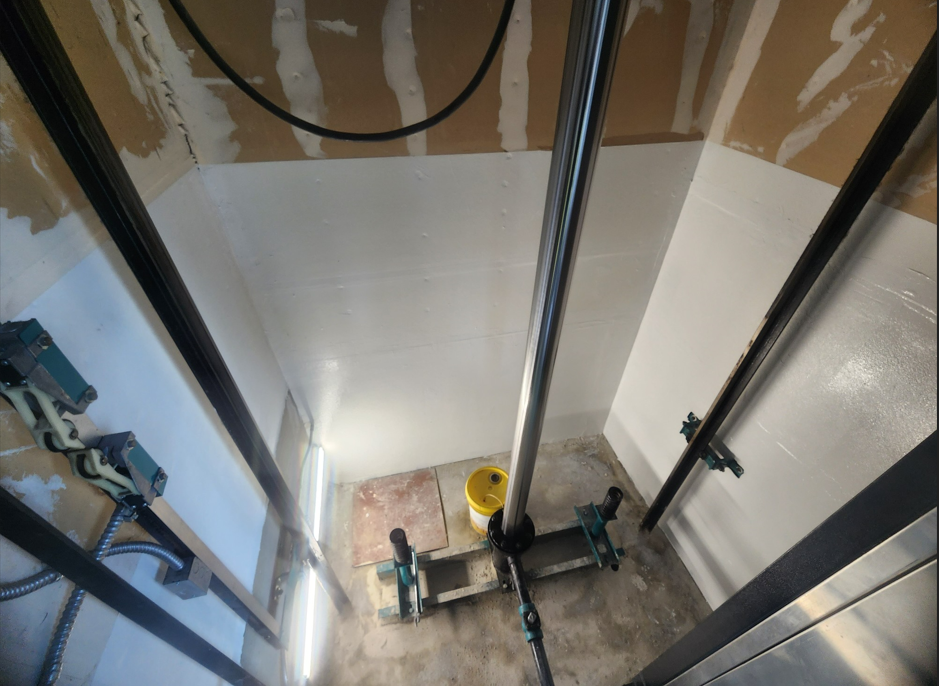Elevator Pit Waterproofing
Elevator pit waterproofing is the process of preventing water seeping into the elevator pit using sealants. There are two methods of sealing elevator pits – positive side sealing (exterior surface) and negative side sealing (interior surface). In elevator pits, positive side sealing is typically performed through injections while negative side sealing is application of a topical sealant.
Elevator pits are out of sight (and therefore out of mind) for most people, but they play a critical role in the smooth and safe operation of elevators. Located below grade, elevator pits are exposed to the risk of water intrusion, which can cause damage to the elevator machinery and compromise safety. For these reasons it is not only important, but also required by code to maintain a dry elevator pit and seal them against ground water penetration.
Building owners, engineers, maintenance techs, and property managers are often informed of water problems only after an elevator inspection or after a service visit by your elevator service company. In the greater Seattle area elevator pits can sit with water in them for months (or longer) before the issue becomes known.
In our experience, injections that create a curtain wall barrier on the exterior of the pit is in many cases not required to stop water intrusion and can be problematic. Injections are an art and a science and often do not create a uniform seal because they are extremely tricky to get right. Sealing the outside from the inside has inherent difficulties: unknown soils behind the concrete, injection ports that are installed at the wrong angle or spacing, injection material not encountering the required feedback pressure to properly seal against the wall or in cracks in the concrete. In a few cases, injections are the way to go, but not in most cases. Injection projects typically cost between two and three times the cost of negative side sealing.
ESC specializes in negative side sealing – the application of cementitious sealants on the interior surface of the elevator pit. We use a polymer modified cementitious material (PMCM) – in our case a fancy way of saying a material that is akin to glass-like cement. First, we clean and prepare the surface for treatment. This includes removing all oils, solvents, greases, fine dirt, chemicals, etc. – anything and everything to get as pristine a substrate as possible. Then we apply a fast-acting PMCM water stop to active leaking areas. This material stops active leaks in moments but is not the seal. Finally, we apply a quick-curing PMCM sealant in several steps and at least two layers and topcoat with another top layer sealant.
Added benefits of hiring ESC to do your pit work: Our projects are turnkey. Many of our pit projects have required the elevator pit electrical to be repaired, replaced, or at the very least tested due to water damage. The elevators need to be secured and made safe to work under by licensed elevator technicians. We are an elevator and electrical contractor. We can, and do, bring all the necessary trades to perform the complex multi-trade projects that elevator pit sealing requires.
Click here to contact us today for a quote to seal your elevator pit.
Complete pit seal. This pit required drywall replacement and mold remediation due to long standing water in the pit. Behind the drywall, ESC pit crew found a sewer pipe that had come off it’s pipe stand and had a leak. Instead of stopping work and demobilizing, we quickly subcontracted a licensed plumber to replace the leaking sewer pipe fitting, construct a code-compliant pipe stand, and secure the pipe to the wall properly. ESC pit crew remediated the mold, sealed the concrete pit walls and floor, replaced framing and drywall, and coated the newly installed drywall with antimicrobial paint.


